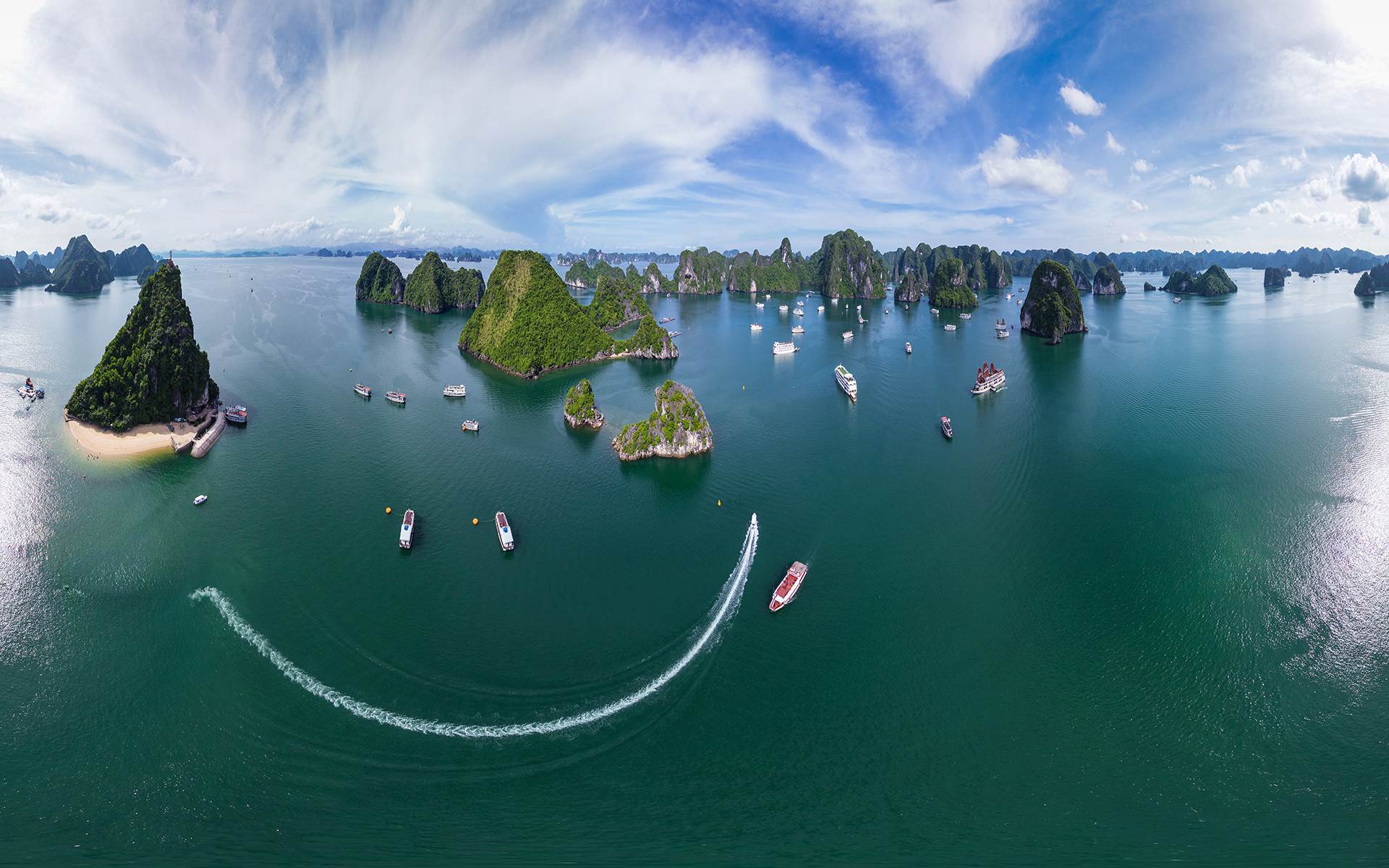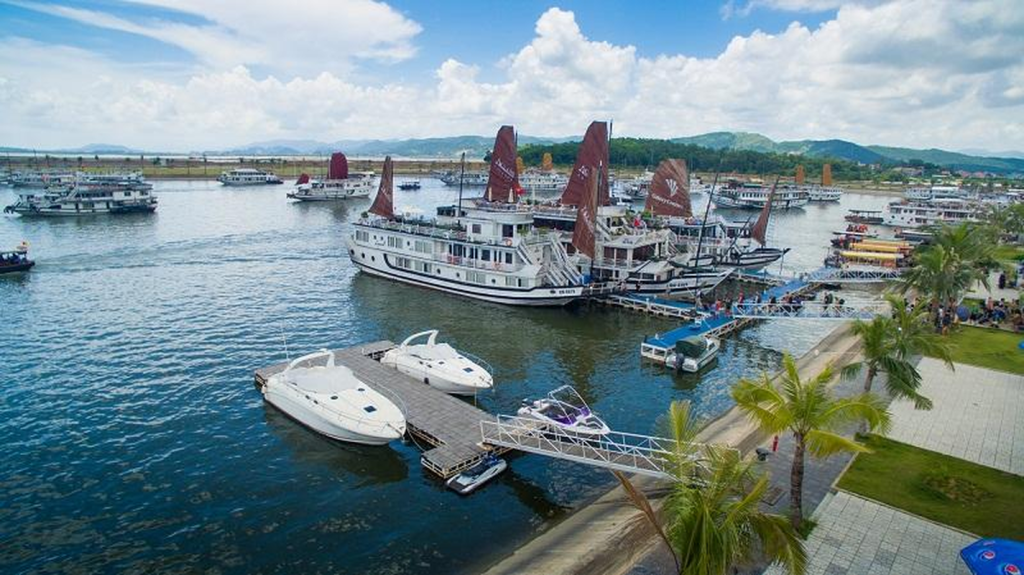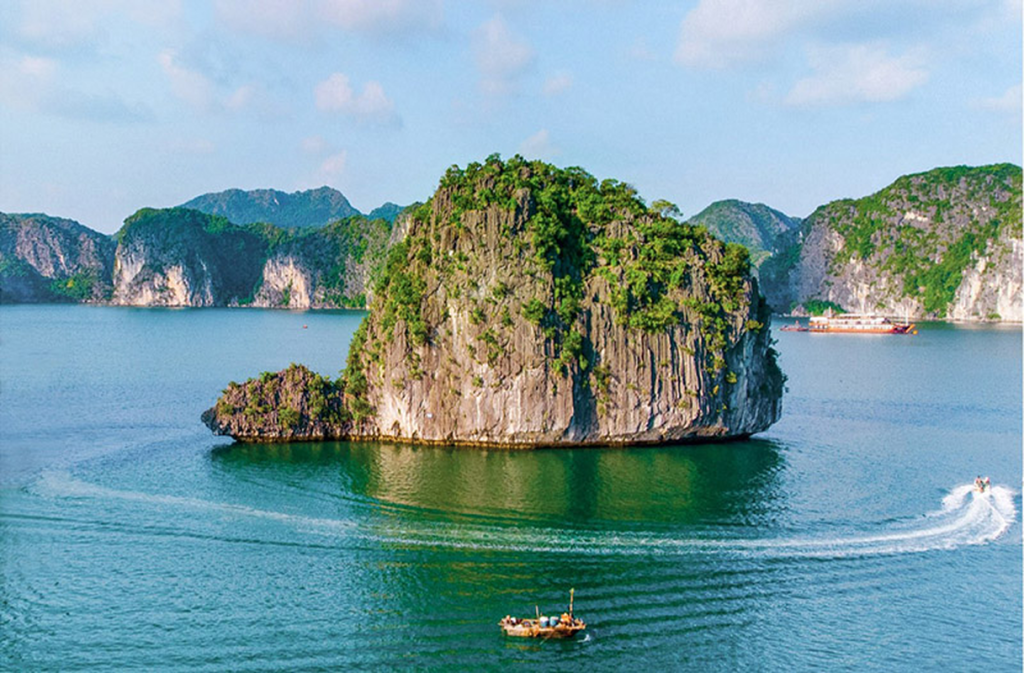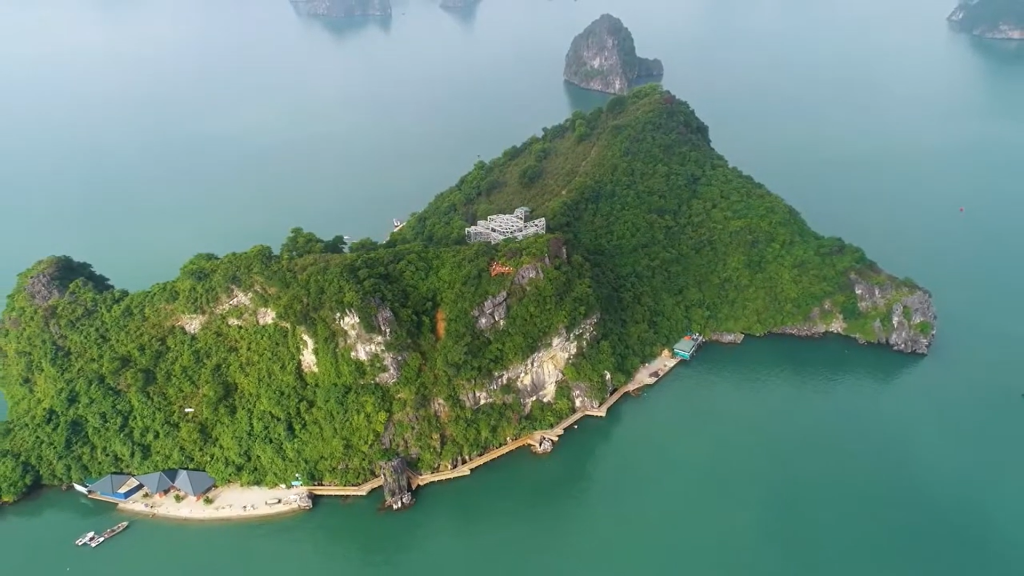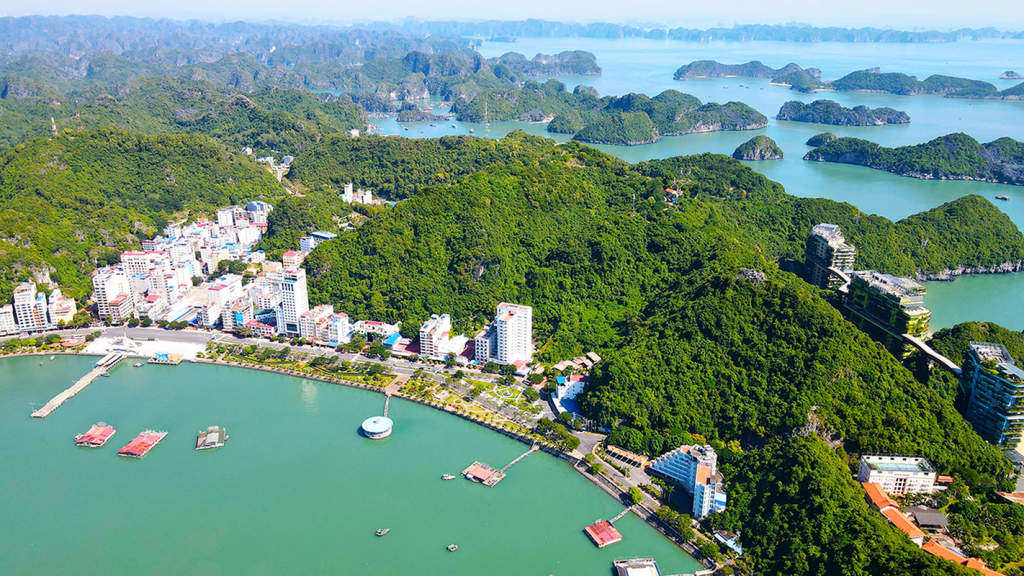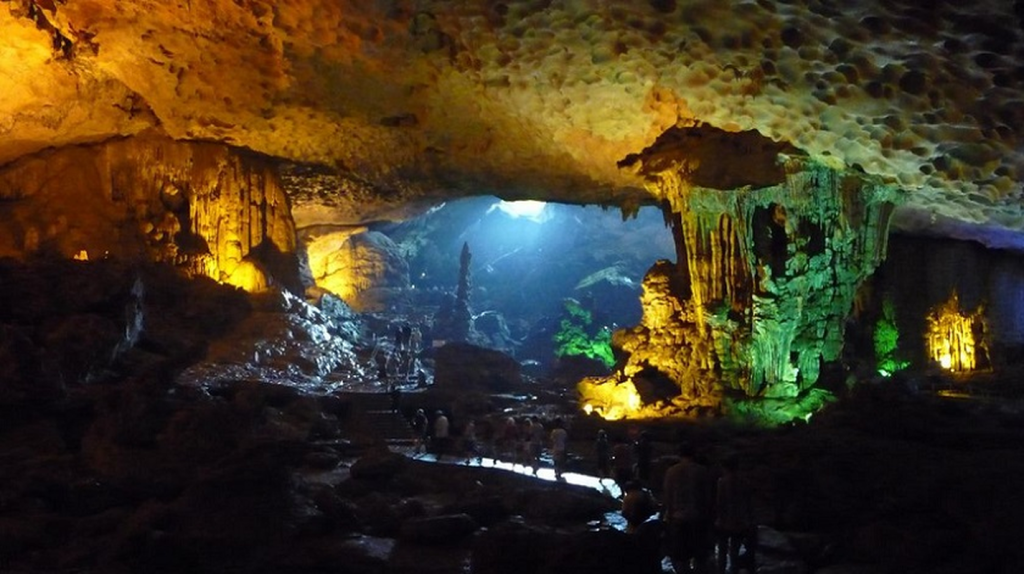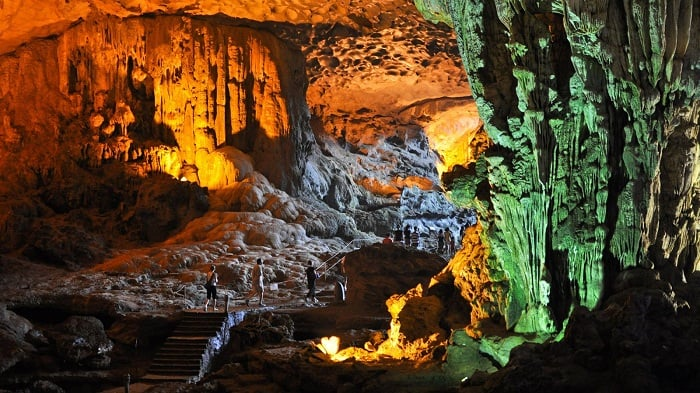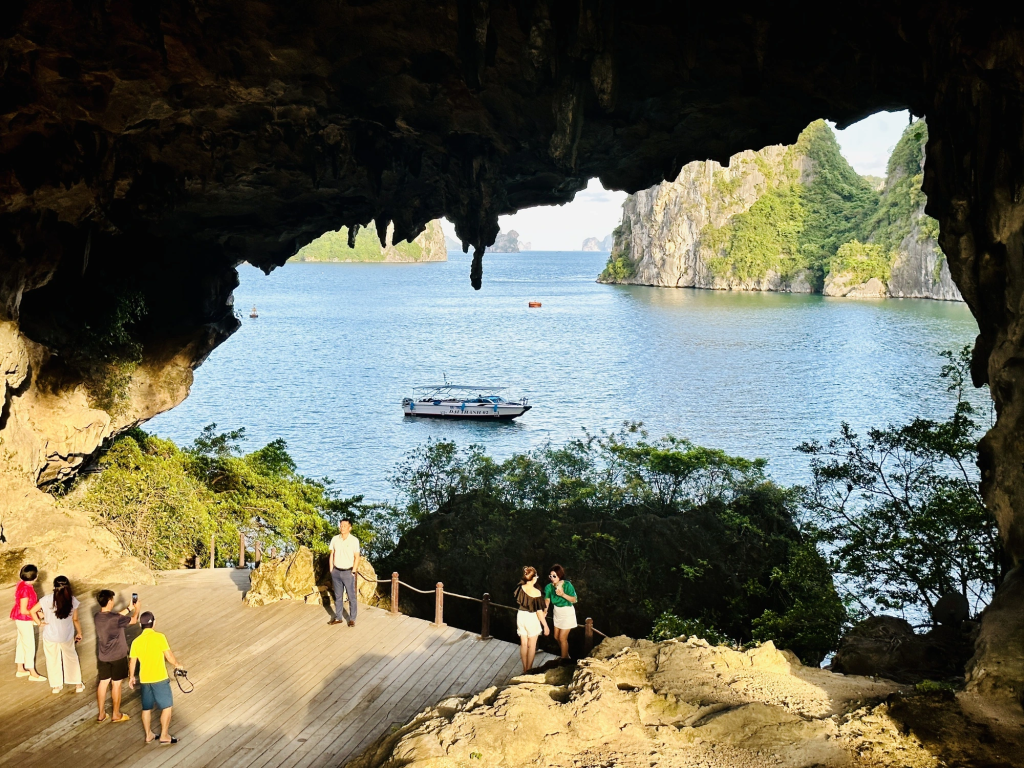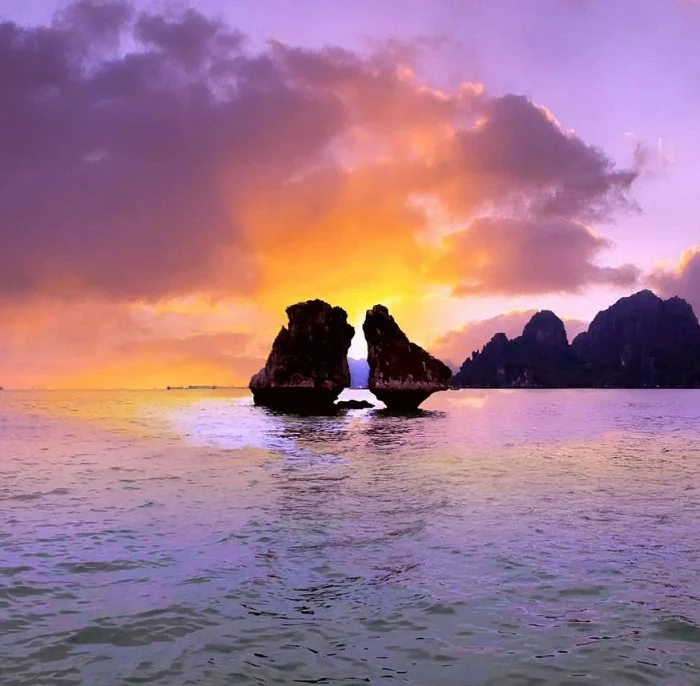Nestled in northern Vietnam, the Cat Ba Archipelago is a treasure trove of natural beauty and biodiversity. As part of the newly designated Ha Long Bay – Cat Ba Archipelago World Natural Heritage Site, Cat Ba is a key component of this globally significant region. Spanning a network of over 360 islands in the Gulf of Tonkin, with Cat Ba Island being the largest, the archipelago is a stunning mix of limestone karsts, tropical forests, and rich marine ecosystems. In recent years, it has gained widespread recognition for its ecological value, diverse flora and fauna, and its growing popularity as a tourist destination.
Geography and Geology
The Cat Ba Archipelago is located to the south of Ha Long Bay in Hai Phong City, covering an area of about 17,000 hectares of land and 9,200 hectares of marine ecosystems. The archipelago is known for its dramatic limestone landscapes, formed through millions of years of geological processes. The distinctive karst formations of fengcong (clusters of conical peaks) and fenglin (isolated towers) are a defining feature of the region, creating a rugged, dramatic skyline that rises abruptly from the sea.
The islands are primarily made up of limestone and shale, which have been shaped over millennia by the effects of wind and water. Numerous caves and grottoes have formed within the limestone, some of which, like Trung Trang Cave, have become popular tourist attractions. The intricate network of caves also provides vital habitats for many species, both above ground and below.

Map Of Ha Long – Cat Ba
Biodiversity and Ecosystems
One of the archipelago’s greatest treasures is its immense biodiversity. The area’s ecosystems range from tropical rainforests and mangroves to coral reefs and seagrass beds, making it one of the most ecologically diverse regions in Vietnam.
- Flora: The archipelago supports over 1,500 species of plants, including many rare and endemic species. Cat Ba National Park, which covers a large portion of Cat Ba Island, is home to ancient forests with towering trees and a rich variety of plant life. Notable among them are the Schefflera alongensis, Cycas tropophylla, and Paphiopedilum concolor, rare species that contribute to the region’s botanical diversity.
- Fauna: The Cat Ba Archipelago is also home to a wide array of wildlife, including 4,910 animal species. The Cat Ba Langur (Trachypithecus poliocephalus), one of the world’s rarest primates, is perhaps the most iconic species of the region. With only about 60-70 individuals remaining, this critically endangered langur is found exclusively on Cat Ba Island, living in the forested areas and limestone cliffs.
Other notable species include the civet, wild boar, serow, and a variety of bird species like the white-bellied sea eagle. The surrounding waters are rich in marine life, with coral reefs supporting species such as the giant clam, sea cucumber, and a multitude of fish species, making it a haven for snorkelers and divers.
The archipelago also supports seven major marine and terrestrial ecosystems, including tropical rainforests, mangroves, coral reefs, and intertidal zones, all of which interact to create a vibrant and healthy environment.

Cat Ba National Park In Cat Ba Island
Historical and Cultural Significance
The Cat Ba Archipelago has long been a place of historical and cultural significance. Archaeological findings suggest that the area has been inhabited for thousands of years, with traces of early human settlements dating back to the Stone Age. Ancient fishing communities have thrived in the region, relying on the sea for sustenance and maintaining a close relationship with their environment.
The islands are dotted with small fishing villages, such as Cai Beo village, where traditional ways of life have been preserved for generations. These communities live on floating houses, adapting to the maritime environment by fishing, aquaculture, and collecting seafood.
During the Vietnam War, Cat Ba Island played a strategic role, and remnants of that era, such as the Cannon Fort, still exist today. The fort, built by the French in the 1940s, offers stunning panoramic views of the surrounding bay and islands and serves as a reminder of the region’s turbulent history.
Tourism in Cat Ba Archipelago
Over the past decade, Cat Ba has become an increasingly popular destination for both domestic and international tourists. Its natural beauty, coupled with its cultural heritage, makes it an attractive destination for eco-tourism and adventure seekers alike.
- Cat Ba National Park is one of the main draws for nature lovers. Visitors can hike through the park’s lush tropical rainforests, explore the cave systems, and catch glimpses of the rare wildlife that inhabits the area. Popular hiking trails such as the route to Nui Ngu Lam Peak offer spectacular views of the island’s dense forests and the azure waters below.
- Lan Ha Bay, located just off the southern coast of Cat Ba Island, is often seen as a quieter alternative to Ha Long Bay. It offers stunning scenery with its hundreds of limestone islets and crystal-clear waters. Tourists can explore the bay by boat, kayak, or paddleboard, enjoying activities like swimming, snorkeling, and rock climbing on the limestone cliffs.
- Beaches: Cat Ba Island is home to several beautiful beaches, including Cat Co 1, Cat Co 2, and Cat Co 3, where visitors can relax, swim, and take in the stunning coastal views. These beaches are surrounded by rocky hills, adding to the secluded and tranquil atmosphere.
Tourism in the archipelago has grown significantly in recent years, leading to the development of resorts, hotels, and restaurants on Cat Ba Island. While this has contributed to economic growth, it also poses challenges in terms of environmental sustainability.

Lan Ha Bay
Environmental Conservation and Challenges
The rapid rise in tourism and urban development has put pressure on Cat Ba’s natural environment. The influx of visitors, combined with activities like fishing and deforestation, threatens to degrade the very ecosystems that make the archipelago so valuable.
Recognizing these challenges, the Vietnamese government and international organizations have taken steps to protect the region’s biodiversity. Cat Ba National Park was established in 1986 as part of an effort to conserve the island’s unique ecosystems. In recent years, initiatives have been launched to monitor and protect endangered species such as the Cat Ba Langur, with conservation programs focusing on habitat preservation and anti-poaching efforts.
In 2004, Cat Ba Archipelago was designated a UNESCO Man and the Biosphere Reserve, recognizing its global ecological importance. This designation highlights the need for sustainable development practices that balance tourism, economic growth, and environmental conservation.
In 2023, the inscription of Ha Long Bay – Cat Ba Archipelago as a UNESCO World Natural Heritage Site further underscored the global significance of this region. This status brings with it heightened responsibility to safeguard its unique ecosystems and preserve its biodiversity for future generations.
How to Get to Cat Ba Island: A Comprehensive Guide
Cat Ba Island, the largest island in the Cat Ba Archipelago, is a popular destination for travelers who seek to experience its stunning natural beauty, diverse marine ecosystems, and untouched landscapes. Known for being part of the Ha Long Bay – Cat Ba Archipelago UNESCO World Heritage Site, Cat Ba is not only a prime tourist destination but also a vital ecological zone. If you are planning a trip to Cat Ba Island, here is an in-depth guide on how to get there, including various transportation options from Hanoi, Ha Long City, and Hai Phong city.
1. How to Get to Cat Ba Island from Hanoi (~124 km)
Hanoi is the most common starting point for many tourists visiting Cat Ba Island. You have multiple options to get from Hanoi to Cat Ba Island:
Option 1: Direct Bus + Ferry Combo
A hassle-free option is booking a direct bus that includes both the bus ride from Hanoi and the ferry to Cat Ba Island. Several bus operators provide this service, such as Cat Ba Express and Good Morning Cat Ba.
- Bus Journey: The bus departs from Hanoi and takes you directly to Got Pier in Hai Phong. The journey takes approximately 2.5-3 hours via the Hanoi-Haiphong Highway.
- Ferry/Speedboat: Once you reach Got Pier, you’ll board a ferry or speedboat that will take you to Phu Long Pier on Cat Ba Island. The speedboat journey lasts about 10-15 minutes, while the ferry takes around 25-30 minutes.
- Final Bus Ride: From Phu Long Pier, another bus will transfer you to Cat Ba Town, where most accommodations and tourist services are located. The bus ride takes roughly 40-45 minutes.
This entire journey, from Hanoi to Cat Ba Town, takes around 3-5 hours depending on traffic and weather conditions. It’s a convenient option that costs approximately 250,000 – 300,000 VND ($10-$15 USD) for the full trip.

Ha Long Bay Cat Ba Archipelago Good Morning Cat Ba Bus
Option 2: Private Car or Van
For those seeking comfort and privacy, you can hire a private car or van from Hanoi to Cat Ba. This option allows more flexibility in terms of schedule and stops, making it ideal for families or small groups.
- Ferry: Once you arrive in Hai Phong, you will still need to take a ferry from Got Pier to Cat Ba Island. You can either drive your car onto the ferry or park at the pier and use the public ferry service.
This method is faster than public buses but more expensive, ranging from 1,500,000 to 2,500,000 VND ($65-$110 USD) depending on the vehicle size and time of year.
Option 3: Bus + Speedboat
Another alternative is taking a bus to Got Pier (Phà Gót) and then switching to a speedboat. The process is similar to Option 1, but with a faster water journey due to the speedboat.
- Sea Bridge Route: After arriving at Got Pier, you will cross the impressive Tan Vu – Lach Huyen Sea Bridge (Tân Vũ – Lạch Huyện), the longest bridge crossing the sea in Southeast Asia, before boarding the speedboat to Phu Long Pier on Cat Ba Island.
- Transfer to Cat Ba Town: Upon arrival at Phu Long, buses or taxis will take you to Cat Ba Town, completing your journey.

Ha Long Bay Cat Ba Archipelago Pha Got
Option 4: Bus + Cable Car
For a more scenic and exciting route, you can opt for a combination of bus and cable car.
- Cable Car: The newly opened Cat Ba Cable Car connects Cat Hai Island to Phu Long Station on Cat Ba Island. Operated by Sun Group, this cable car system covers 4 km in just 10 minutes. It offers stunning views of the islands and the bay and is the longest cable car over the sea in the world.
- Cost: Tickets for the cable car are priced at 150,000 VND for adults and 100,000 VND for children (under 1 meter in height are free).
Once you disembark from the cable car at Phu Long Station, a short bus ride will bring you to Cat Ba Town.
2. How to Get to Cat Ba Island from Ha Long City (~20 km)
If you are already in Ha Long City, Cat Ba Island is just a short ferry ride away. This route is commonly chosen by tourists who want to explore both Ha Long Bay and Cat Ba Island on a single trip.
Ferry from Tuan Chau Pier to Gia Luan Pier
The ferry from Tuan Chau Pier in Ha Long City to Gia Luan Pier on Cat Ba Island operates daily, with frequent departures during the high season.
- Ferry Duration: The ferry ride takes about 45-50 minutes, offering panoramic views of the stunning limestone karsts of Ha Long Bay along the way.
- Cost: The ferry ticket costs around 80,000 – 100,000 VND per person.
Once you arrive at Gia Luan Pier, it’s a 30-40 minute bus or taxi ride to Cat Ba Town, the main hub of the island.
3. How to Get to Cat Ba Island from Hai Phong City (~40 km)
For travelers starting from Hai Phong City, the nearest mainland city to Cat Ba Island, there are several ways to get to the island:
Option 1: Speedboat
Speedboats operate daily from Ben Binh Pier in Hai Phong, offering the fastest way to reach Cat Ba.
- Speedboat Duration: The trip from Ben Binh Pier to Cai Vieng Pier or Cat Ba Pier takes around 45 minutes.
- Cost: The ticket prices range from 180,000 to 220,000 VND per person.
Option 2: Bus
The Good Morning Cat Ba bus service operates from Hai Phong to Cat Ba Town, using the Tan Vu Lach Huyen Bridge. The journey takes approximately 1 hour and 40 minutes and includes a scenic drive over the sea.
Option 3: Private Car or Taxi
A private car or taxi from Hai Phong to Got Pier, followed by a ferry or speedboat, is another fast and comfortable option.
Best Time to Visit Cat Ba Island
While Cat Ba Island is beautiful year-round, the best time to visit depends on the type of activities you plan to engage in:
- Spring (March – April): The weather is pleasant, and the sea is warm, making it ideal for outdoor activities like hiking, kayaking, and swimming. This is considered the best season for visiting.
- Summer (May – August): Peak season with hot temperatures, but also the busiest time for tourists. If you enjoy water sports and don’t mind the crowds, this is a great time for a visit.
- Autumn (September – November): There can be frequent rainstorms, especially in September, but October and November are generally quieter and still offer nice weather.
- Winter (December – February): The island is much quieter, with fewer tourists, and the weather is cool. While swimming might be too cold, it’s a great time to explore the landscape and take advantage of lower hotel rates.
Where to stay on Cat Ba Island
From budget accommodations to luxury resorts, Cat Ba Island has a wide range of lodging options. Popular options include:
- Sea Pearl Hotel: Midrange option located near the waterfront, offering comfortable rooms and convenient access to the main attractions.
- Monkey Island Resort: Set on the remote Monkey Island, this resort is perfect for those seeking an off-the-beaten-path experience.
- Flamingo Cat Ba Beach Resort: A luxury resort offering 5-star amenities, including beachfront access, swimming pools, and stunning views of the bay.
For those combining a trip to Lan Ha Bay and Ha Long Bay, many overnight cruises like Orchid Cruises and La Regina Legend include Cat Ba Island in their itineraries, allowing tourists to stay on the island as part of a multi-day cruise package.
The Cat Ba Archipelago is a region of extraordinary natural beauty and ecological importance. Its rich biodiversity, stunning limestone karsts, and pristine marine environments make it a jewel in Vietnam’s natural heritage. As it gains increasing international recognition, the challenge remains to protect its fragile ecosystems while allowing sustainable tourism to thrive. For visitors, Cat Ba offers an unparalleled opportunity to experience some of the most breathtaking landscapes and unique wildlife that Vietnam has to offer. Whether hiking through its ancient forests, exploring hidden caves, or simply relaxing on its idyllic beaches, the Cat Ba Archipelago promises an unforgettable adventure that blends nature, culture, and conservation.
Source: Ha Long Diamond Cruise Official Cruise

